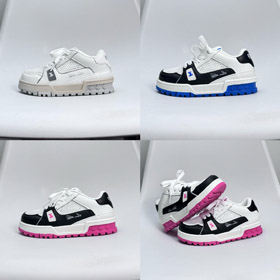Home >
The Historical Journey and Cultural Essence of Armani: A Pinnacle of Italian Elegance
The Historical Journey and Cultural Essence of Armani: A Pinnacle of Italian Elegance
2025-04-25
Giorgio Armani, a name synonymous with understated luxury and timeless sophistication, has left an indelible mark on the global fashion landscape. Founded by the visionary designer of the same name in 1975, the Armani brand embodies the perfect fusion of Italian craftsmanship, minimalist aesthetics, and a deep understanding of modern individuality. This article explores the brand’s rich history, cultural significance, and its enduring legacy as a symbol of refined elegance.
Origins and Founding Vision
Giorgio Armani’s journey into fashion began not in a design studio but in the world of medicine, where he studied at the University of Milan before leaving to pursue a career in photography and window dressing. His early experiences at luxury fashion houses like Nino Cerruti honed his eye for tailoring and fabric, laying the groundwork for his own brand. In 1975, with business partner Sergio Galeotti, Armani launched his eponymous label in Milan, a city rapidly emerging as a hub of innovative design.
From the outset, Armani challenged the prevailing norms of 1970s fashion, which often prioritized opulence over comfort. He introduced the concept of “unstructured elegance,” characterized by soft shoulders, fluid silhouettes, and neutral palettes in menswear—a radical departure from the rigid, power-driven styles of the era. This revolutionary approach quickly resonated with a generation seeking sophistication without ostentation, catapulting Armani to international fame.
Cultural Impact and Design Philosophy
Armani’s influence extends beyond fashion; it reflects a cultural ethos of understated luxury and inclusivity. The brand’s signature aesthetic—clean lines, muted tones, and impeccable tailoring—became a hallmark of modernity, appealing to both men and women who valued versatility and timelessness. In 1980, the iconic Armani suit, featured in the film American Gigolo, solidified the brand’s association with urban sophistication, transcending fashion to become a cultural touchstone.
A key pillar of Armani’s philosophy is accessibility. While the Giorgio Armani haute couture line remains synonymous with exclusivity, the brand expanded into more affordable ranges like Emporio Armani and Armani Exchange, democratizing luxury without compromising quality. This multi-tiered approach allowed Armani to cater to diverse audiences, from fashion-forward youth to discerning professionals, while maintaining a unified brand identity rooted in simplicity and refinement.
Culturally, Armani has also been a pioneer in celebrating diversity. The brand’s runway shows and campaigns often feature models of various ages, ethnicities, and body types, reflecting a commitment to inclusivity that aligns with evolving societal values. This ethos mirrors the brand’s belief that fashion should empower individuals to express their unique identities, not conform to fleeting trends.
Global Expansion and Legacy
By the 1990s, Armani had established itself as a global luxury empire, expanding beyond apparel into fragrances, cosmetics, eyewear, and even home decor. The brand’s iconic logo—a crossed “A” symbolizing Armani’s initials—became a universally recognized emblem of sophistication. Armani’s commitment to quality craftsmanship is evident in its use of premium materials, such as cashmere, silk, and fine wool, sourced primarily from Italy, reinforcing its reputation as a guardian of artisanal excellence.
In recent years, the brand has embraced modernity while staying true to its roots. Under the leadership of Giorgio Armani himself, now in his late eighties, the label continues to innovate through sustainable practices and digital initiatives. For instance, Armani was an early adopter of eco-friendly materials and ethical production processes, reflecting a growing industry focus on sustainability. Additionally, the brand’s foray into virtual fashion shows and online exclusives highlights its adaptability in an ever-changing market.
Conclusion: A Timeless Symbol of Italian Craftsmanship
Giorgio Armani’s legacy is a testament to the power of vision and consistency. For nearly five decades, the brand has remained a paragon of Italian elegance, redefining luxury as a quiet confidence rather than an overt display. From its revolutionary menswear to its inclusive ethos and global reach, Armani continues to shape fashion culture while honoring the traditions of craftsmanship.
As a brand that seamlessly blends heritage with innovation, Armani serves as an inspiration for designers and consumers alike. Whether exploring their latest collections on platforms like Orientdig Spreadsheet, which showcases a curated selection of premium products, or admiring their iconic runway designs, the Armani name remains synonymous with timeless sophistication—a cultural institution that transcends trends and celebrates the enduring allure of understated style.
Word count: ~600
External link: Orientdig Spreadsheet (integrated to highlight curated luxury selections, aligning with Armani’s premium ethos).
External link: Orientdig Spreadsheet (integrated to highlight curated luxury selections, aligning with Armani’s premium ethos).



















